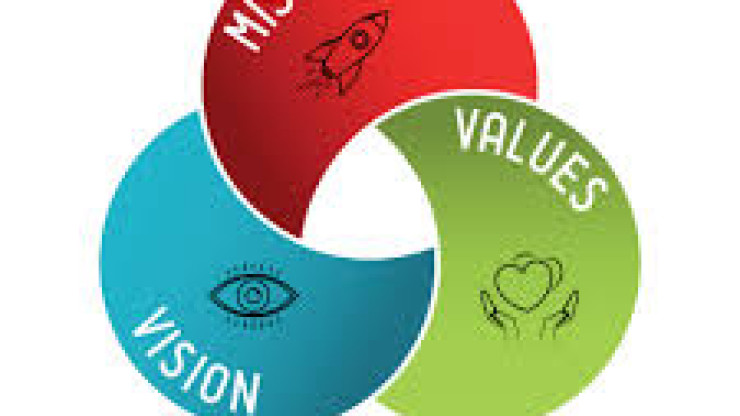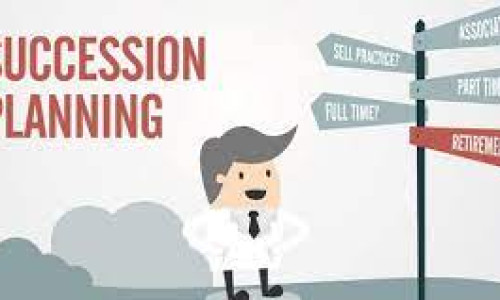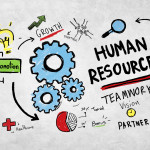Crafting a Strategic Framework: Mission Statement, Vision, and Values

Umair Durrani
Mar 25, 2024
86
In today's dynamic business landscape, establishing a robust strategic framework is crucial for organizational success. A strategic framework encompasses key elements such as a mission statement, vision, and values, which serve as guiding principles shaping the company's direction and culture. Let's delve into each component and understand how to build a strategic framework that fosters clarity, alignment, and growth.
Understanding the Components:
1. Mission Statement:
A mission statement defines the purpose and reason for an organization's existence. It answers the fundamental question, "What do we do?" A well-crafted mission statement communicates the core objectives and activities of the business, guiding decision-making and providing a sense of direction for employees and stakeholders.
When creating a mission statement:
- Clarity: Ensure the statement is clear, concise, and easily understandable by all stakeholders.
- Relevance: Align the mission statement with the company's industry, goals, and target market.
- Inspiration: Infuse the statement with motivation and inspiration to rally employees and stakeholders behind a common cause.
- Differentiation: Highlight what sets your organization apart and why it is unique in fulfilling its mission.
Example: "Our mission is to empower individuals through innovative technology solutions that enhance productivity and foster personal growth."
2. Vision:
A vision statement articulates the desired future state or long-term goals of the organization. It answers the question, "Where do we want to be?" A compelling vision statement paints a vivid picture of success, motivating employees and guiding strategic initiatives toward achieving the desired outcomes.
Key aspects of a compelling vision statement include:
- Aspiration: Express ambitious yet achievable goals that inspire continuous improvement and progress.
- Alignment: Ensure alignment between the vision statement and the organization's mission, values, and strategic objectives.
- Clarity: Use clear and specific language to describe the envisioned future state, avoiding ambiguity.
- Timeframe: Optionally, include a timeframe or milestone markers to provide a timeline for achieving the vision.
Example: "To become the global leader in sustainable technologies, driving positive change for future generations by 2030."
3. Values:
Values represent the guiding principles and beliefs that shape the culture and behavior of an organization. They define the expected norms, ethics, and attitudes of employees, influencing decision-making, interactions, and organizational practices.
When defining core values:
- Authenticity: Ensure that values reflect the true culture and aspirations of the organization, guiding actions and decisions.
- Alignment: Align values with the mission, vision, and strategic objectives, fostering consistency and coherence.
- Inclusivity: Involve employees and stakeholders in defining values to create a sense of ownership and shared commitment.
- Actionable: Translate values into actionable behaviors and practices that guide daily operations and interactions.
Example Values:
- Integrity: We uphold the highest ethical standards in all our endeavors.
- Innovation: We embrace creativity and continuous improvement to drive positive change.
- Collaboration: We work together across teams and departments to achieve shared goals.
- Diversity: We respect and celebrate diversity, fostering an inclusive and equitable workplace.
Benefits of a Strategic Framework:
- Clarity and Focus: A well-defined strategic framework provides clarity on organizational purpose, goals, and priorities, helping teams align their efforts.
- Alignment: It ensures that everyone in the organization is working towards common objectives, reducing conflicts and improving synergy.
- Cultural Cohesion: By articulating values and vision, a strategic framework nurtures a strong organizational culture based on shared beliefs and behaviors.
- Decision Making: It guides decision-making processes by providing a reference point for evaluating opportunities and risks.
- Stakeholder Engagement: A clear strategic framework enhances communication with stakeholders, fostering trust and confidence in the organization's direction.
In conclusion, building a strategic framework comprising a mission statement, vision, and values is essential for guiding organizational growth, fostering a positive culture, and driving success in today's competitive business environment. By investing time and effort in crafting these foundational elements, businesses can set themselves on a path towards sustainable growth and excellence.








